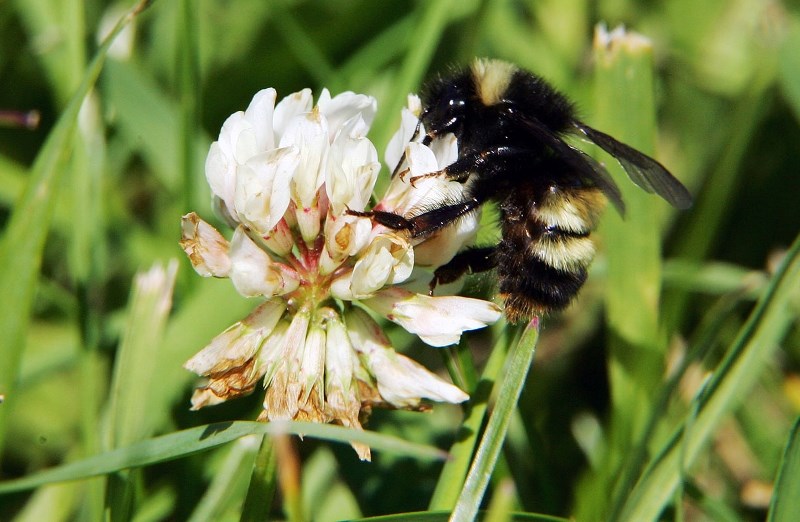The humble bumblebee may be edging towards extinction in some regions because it can’t keep up with climate change, suggests a new report.
University of Ottawa biologist Jeremy Kerr and his team released a study this week in Science on the impacts of climate change on bumblebees.
Kerr and his team used a database of about 423,000 bumblebee sightings in Europe and North America to track how the ranges of 67 bumblebee species changed from 1901 to 2010.
The team found no change in the northern edges of these ranges over that time despite some 2.5 C of climate warming across this region. Alarmingly, they found that the southern edge of many bumblebee ranges had shrunk by up to 300 kilometres, suggesting that, unlike butterflies, these insects were not moving north as climate changed.
The team’s research also found that these range changes could not be explained by land-use changes or pesticide use – two common suspects in recent cases of bee colony collapses.
“We are looking at rates of loss of about nine kilometres a year,” Kerr said in a press conference.
“This is a huge loss, and it has happened very quickly.”
Kerr described these bees as being “crushed” in a “climate vice,” dying out in the south while unable to move north.
Kerr said it’s likely that bumblebees aren’t moving north to more suitable climates (as butterflies do) because they evolved in cool climates (whereas butterflies evolved in the tropics). Bumblebees also reproduce slowly, which would inhibit their ability to get established in a new region. The rapid weather changes promoted by climate change could also cause bumblebee populations to go locally extinct.
The loss of these bees could have great impact on some crops, many of which rely on bees for pollination, the team found. It’s also possible that other pollinators could move in to fill the gap.
“We must reduce greenhouse gas pollution and come to grips convincingly with the climate change threat,” Kerr said.
Governments may have to physically move some bee populations to compensate for climate change, Kerr said.
Study co-author Laurence Packer said gardeners could help bumblebees by planting native flowers with easy-to-access pollen.
“The wild rose of Alberta is perfect. It’s like a plate of food for bees that says, ‘Come get me!’ ”
The study can be found in this week’s edition of Science.
Great heat and dry skies continued to sap local waterways this week, with much of the Sturgeon River running dry through St. Albert.
Flow rates in the Sturgeon at the Perron Street Bridge flow meter continued to hover around zero this week, reports Alberta Environment – significantly below the average for this time of year.
The water height at the meter Thursday was about 25 centimetres, said city community sustainability manager Leah Kongsrude.
“Normally at this time of year we’re at about one metre.”
The North Saskatchewan River also reportedly hit a 14-year low for flow this week.
Tight water supplies prompted the Town of Morinville to ask residents to suspend all non-essential water use on Friday, including watering lawns, car washing and filling pools. Sturgeon County brought in similar restrictions for the Sturgeon Valley region.
The Sturgeon’s low flow was due entirely to sparse winter snows and a lack of rain, as the river was entirely reliant on those for flow, Kongsrude said.
While this wasn’t the first time the river had sunk to these depths (similar levels were reached in 2009 and 2012), Kongsrude said it’s rare for it to happen in July.




